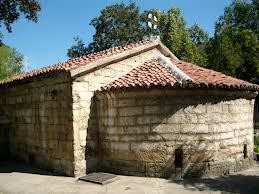

“St. Petka” is a church in Vidin, opposite the “the barracks of Cross”, the museum of the fortified part of the old town. It is a cultural monument of local importance.
According to the inscription from above the church, the entrance door was built on ancient Slavic foundations since 1634 and the inscription above the entrance to the ship, which was maintained until the 20th century, dates back to the construction in 1636. It shows that the temple painting was done with the help of Prince Matei Basarab and Metropolitan Sofronii of Vidinv in 1646.
The renowned Bulgarian cleric Sofronii of Vratsa had served in “St. Petka” during his forced stay in Vidin, between 1800-1802.
In 1806, former mujahideen and local leader, Osman Pazvantoglu, closed into the church several hundreds of lay people and priests from Vidin and from its surroundings, together with Bishop Kalinikos and massacres them at the altar.
In accordance with the Ottoman border law at the time, the authorities could confiscate and adapt for defensive purposes all border fortification buildings. Because of the proximity of military installations the church was converted into a military warehouse for coal and has been in this state until a few years before its liberation in 1878.
The church nave building, half hidden in the ground, has a cylindrical vault placed under the roof. There is a wide slightly elongated apse and a small porch, dimly lit, with an entrance on the south side. The walls are of stone, below the roof there is a rack stone cornice and 4 rows of bricks.
Carved deeper into the foundation of the church is “St. Panteleimon”. Later narrow narthex has a vaulted entrance into the nave, which is shorter, with a semi-cylindrical entrance and niches in the longitudinal walls.
The church was decorated. In the upper parts of the walls of the ship are belts and pendants with images of saints and evangelical scenes are inscribed on the arch. At its center there are two medallions onto which are written the names Christ and Mary. The old iconostasis is not preserved. The church has two icons which have valuabel gaskets, made in 1823 and 1832 by famous goldsmiths from Vidin. Interesting is the filigree ship-shaped candle holder, that was donated to the church in 1872.


